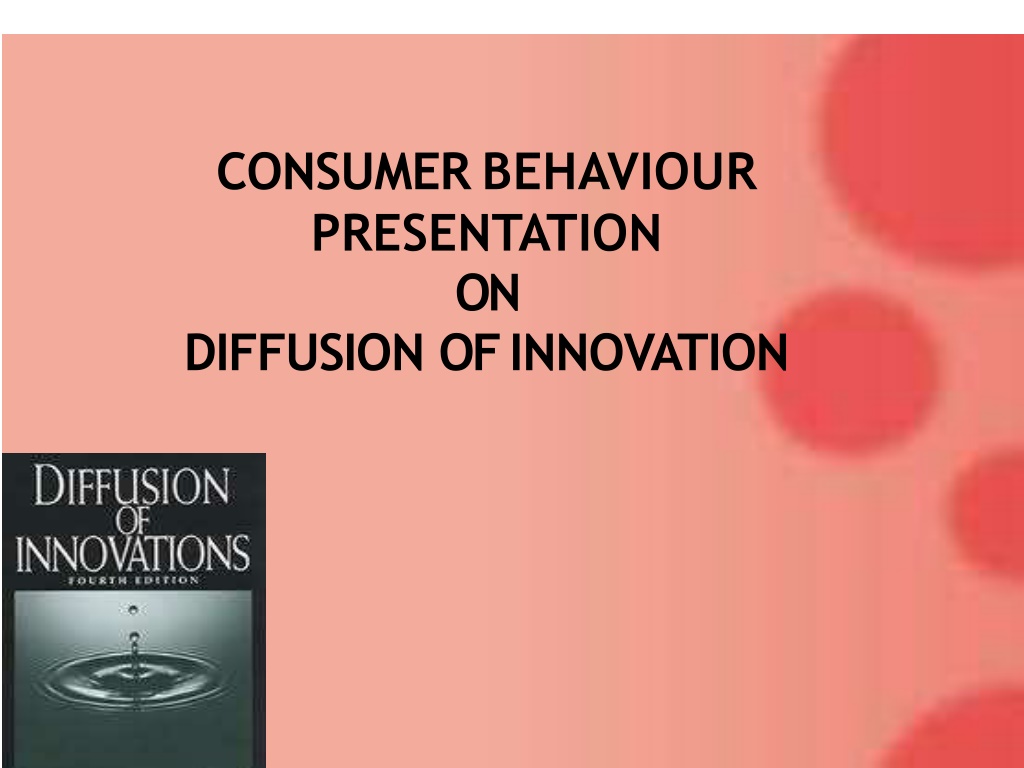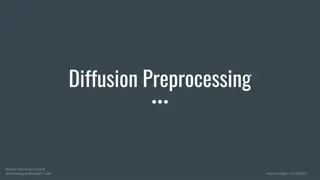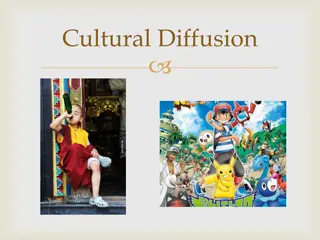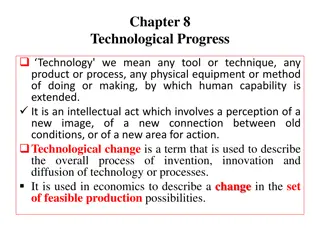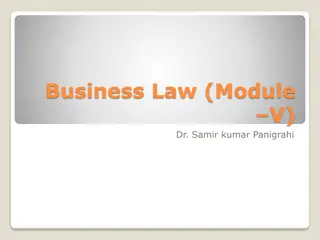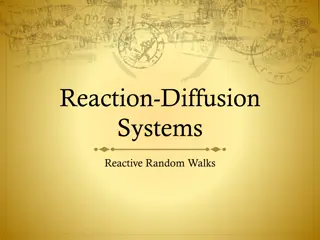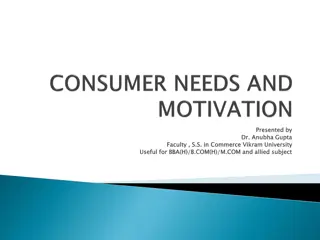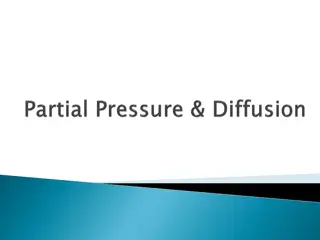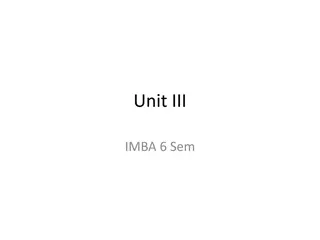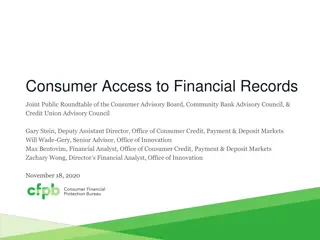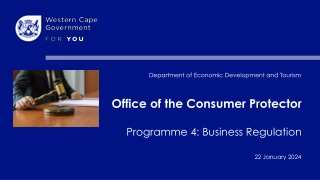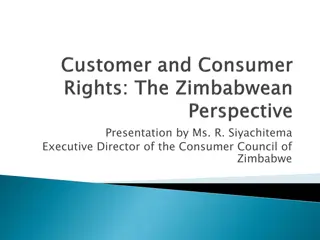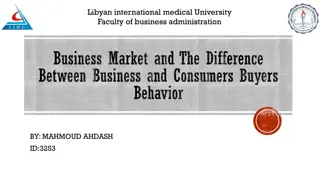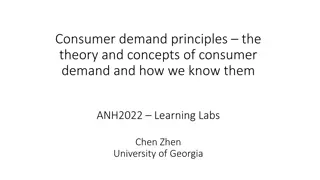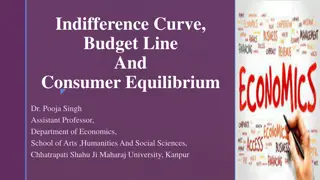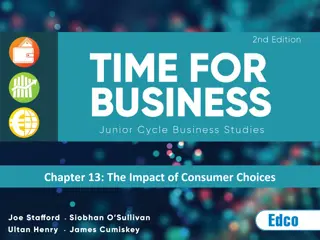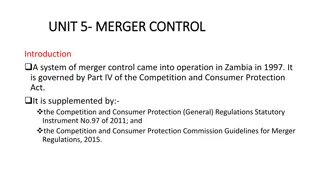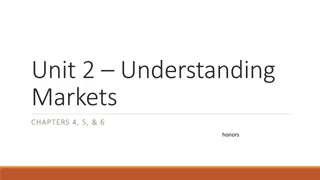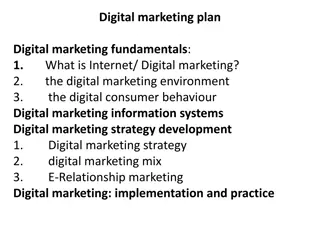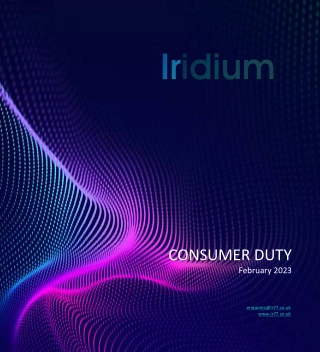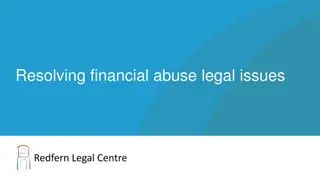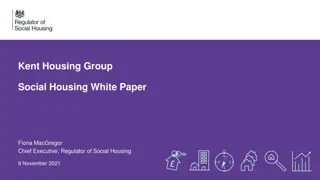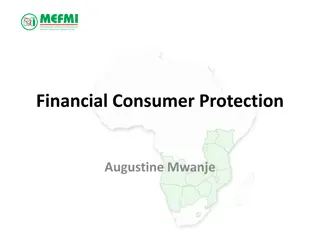Understanding the Diffusion of Innovation in Consumer Behavior
Innovation is the transformation of ideas into practical solutions, with two types being new developments and new things. The theory of diffusion of innovations explains how new ideas spread over time through stages like innovators, early adopters, and laggards. The process is influenced by communication channels, social systems, and product characteristics like compatibility and observability.
Download Presentation

Please find below an Image/Link to download the presentation.
The content on the website is provided AS IS for your information and personal use only. It may not be sold, licensed, or shared on other websites without obtaining consent from the author. Download presentation by click this link. If you encounter any issues during the download, it is possible that the publisher has removed the file from their server.
E N D
Presentation Transcript
CONSUMER BEHAVIOUR PRESENTATION ON DIFFUSION OFINNOVATION
What is Innovation??? Transformation of an idea into something useful. There are two different kinds of innovations 1.New things 2.Development of new things.
Diffusion of Innovation The diffusion of innovations theory seeks to explain how and why new ideas and practices are adopted, with timelines potentially spread out over long periods. It is designed in two process: 1. Diffusion 2. Adoption
Stages in innovation Innovators Earlyadopters Earlymajority Late majority Laggards.
The diffusion process Various approaches have been taken to define newproduct: 1.Firm oriented 2.Productoriented 3.Market oriented 4.Consumeroriented The innovation The channels of communication The social system Time
The diffusion process how quickly innovation spread depends onchannel on communication. There are two sources for communication: I. Impersonal II.Interpersonal The innovation The social system Time
The diffusion process It is a physical, social or cultural environment in which people belong and within which they function: It can be of two type : I. Traditional social system II. Modern social system The innovation The channels of communication Time
The diffusion process Backbone of diffusion process. it pervades the study of diffusion in three distinct ways : 1.The amount of purchase time. 2.The identification of adopter categories 3.The rate of adoption. The innovation The channels of communication The social system
Product characteristics that influence diffusion Relative advantage Compatibility Complexity Trialability Observability Resistance toinnovation
Adoption process Consumer in first expose to the product innovation. Lacks ininformation about theproduct May only know the name of productand its basic features. Interest Evaluation Trial Adoption or Rejection
Adoption process Consumer is interested inproduct and search for additional information. He wants to know what is it, how it works and whatits potentialities are. Awareness Evaluation Trial Adoption or Rejection
Adoption process Consumer decides whether or not to believe this productor service. Will it satisfyhis needs and requirements. Individual makes a mental trial of the idea Awareness Interest Trial Adoption or Rejection
Adoption process Consumer uses the product on a limited basis. During this stage the individual determines the usefulness of the innovation and may search for further information about it. The trial stage is characterized by small-scale experimental use, when it s possible. Awareness Interest Evaluation Adoption or Rejection
Adoption process If trail in favorable consumer decidesto use the product If unfavorable the consumer decidesto reject it. Awareness Interest Evaluation Trial
Consumer innovator Small group of consumer who are the earliest purchase of the new product. Earliest customer can be defined in may ways : First 2.5% of the social system Status of the new product investigation Innovativeness .
Opinion leader Individual whose ideas and behavior serve as a model to others. The innovator is an opinion leader. When innovators are enthusiastic they might encourage other to buy it. For products that do not generate much excitement consumer innovators might not be sufficiently motivated to advice it.
Market mavens Special category of consumer influencer. Posses a wide range of information about different type of products, retail outlet etc. Like to shop and share shopping. Not primarily concerned with price.
Personalitytraits Personality traits that have been useful in differentiating consumer innovators and non innovators include: Consumer innovativeness Dogmatism Social character Need for uniqueness Optimum stimulation level
Change leaders Also know as high-tech innovators. Such individuals tend to embrace and popularize many of the innovation that are ultimately excepted by mane frame population such as computer, fax machine etc. They fall into two distinct group: 1. Youngergroup 2. Middle-aged group
Technophiles Those individuals who purchase technologically advance product soon after their market debut. They tend to be technically curious people. These consumers are typically younger, better educated and more affluent.
Managerial application Marketing research Development of new product Reviews of product
References 1. Consumer Behaviour by Leon G. Schiffman and Lesile Lazar Kanuk. 2. Marketing Innovation by Davila Estein,Shelton 3. Consumer Behavior in Indian perspective by Suja nair
